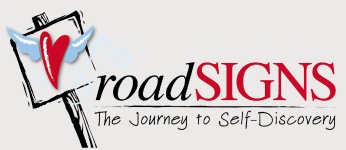Introduction
Over the last four years, roadSIGNS has been working with one of our clients as a beta group to understand the impact organizational leadership can have when they develop their employees differently. Rather than focusing constantly on areas for development, usually based on perceived weaknesses, our question was how can you identify individual strengths and leverage these to develop and promote staff. We are now is the process of expanding this work to other clients and as we do so are in the process of developing a toolkit for assisting clients in implementation.
As a result, I have decided to dedicate the roadSIGNS Coach to this discussion in the upcoming months. It is intended to be a discussion and an exchange. Your questions and comments are most welcome. And now….
The Case for Creating a Strengths-Based Work Culture
While there are many levers for engaging people and driving performance….
the master lever is getting each person to play to his strengths.
Pull this lever, and an engaged and productive team will be the result.
Marcus Buckingham, Go Put Your Strengths to Work
In his book Go Put Your Strengths to Work, Marcus Buckingham points out that while individuals have been taking the time to identify their strengths over that last two decades, few individuals are doing anything with this knowledge. It seems that we gather information but fail to apply it. It is possible that this lack of integration and application to day to day life/work is related to the absence of the necessary tools and coaching to facilitate this.
Over the last four years our organization, roadSIGNS, has focused on building a strengths-based work culture with our clients. We did not embark on this journey because it was ‘cutting edge’, it simply made sense to us. We were introducing our clients to a variety of tools which assessed individual strengths as part of our coaching/consulting process. Our question was and continues to be, ‘How can this knowledge be put to good use in support of the organizations goals and objectives?”
We dove in, learning as we went, partnering with our clients to understand how to implement the strengths-based work culture and making adjustments as we went along.
Today, we are still learning. To date, our clients have experienced a number of shifts within their organizations including:
- Clarity regarding their compelling ’WHY’ and rallying staff around this cause
- Enhanced hiring strategies
- Improved staff retention
- Improved staff engagement and commitment
- Enhanced productivity
- Increased organizational flexibility
- Better matching of individuals strengths and work requirements
The Research
As we dipped into the research literature regarding strengths and integrating strengths as part of a strengths-based work culture, we were surprised to learn that this area has not been well investigated. Most of the relevant research evidence is sourced from the Gallup organization and the field of Positive Psychology.
Harter and Schmidt (2002) reported that employees who have the opportunity to do what they do best every day, that is work from their strengths, are 44% more likely to succeed in engaging their customers. If these individuals are managers they are also more likely to retain their employees and enhance overall productivity.
Organizations that offer their employees the opportunity of assessing their strengths, without any further interventions such as coaching, are still ahead of the game. Asplund (2008) reports that employees are 12.5 % more productive, that their organizations are 9% more profitable and that staff turnover is 15% less than organizations, with no strengths assessments.
Clifton and Harper (2003) found that managers who built on the strengths of their team members were 86% more successful than managers who did not. These managers were also more likely to invest time in coaching their staff, matching talent to tasks, and rewarding strengths rather than seniority when making personnel decisions.
Outside the work environment, there is evidence within student populations that students whose strengths and talents were identified perceived they had more control of their academic futures than students who did not know their strengths or talents. In addition, students who actively develop their strengths are more likely to set learning goals and have a growth mindset. (Louis, 2008)
Additional research from the literature related to the Via Character strengths, suggests that engaging one’s strengths leads to increased happiness (Gander et al, 2012), leads to a higher sense of well-being (Forest et al, 2012), helped individuals overcome obstacles (Elson and Boniwell, 2011), increases vitality and self-esteem (Wood et al, 2011), and improves progress toward goals, independence and competence (Linley et al, 2010).
Now What
With our experience to date and the support of the research to date, we believe that creating work cultures which build on the strengths of individuals, creates a strong organizational foundation. Marcus Buckingham noted that the greatest asset of organizations is not their employees, rather the strengths that those employees possess.
While creating a strengths-based work culture is, in our view, common sense, the practice is not pervasive. Typically employees are given their annual report card called performance review and while they may excel in several areas of performance, typically the conversation turns to areas for improvement. These are viewed as weaknesses.
We are not here to suggest that these areas should not be identified. We are here to suggest that the approach and the performance review methodology can improve significantly by working from a strengths-based platform.
Until next time…
Betty Healey, MEd.,
Facilitator, Teacher and Coach
